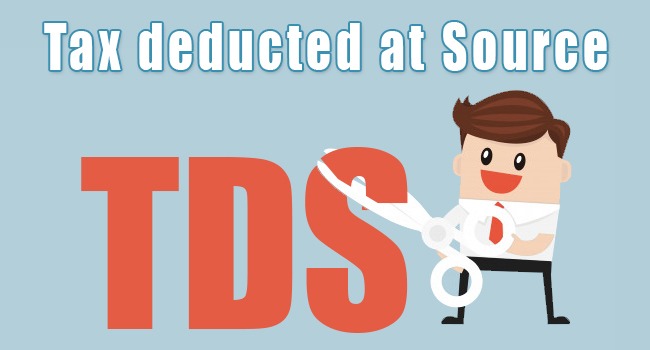
TDS THRESHOLD LIMIT
The Tax Deducted at Source (TDS) section of the Indian Income Tax Act mandates certain entities to deduct tax at the point of income generation. This system ensures a steady flow of revenue to the government and discourages tax evasion. The threshold limit refers to the minimum income level at which TDS becomes applicable. It varies based on the nature of income, such as salary, interest, rent, etc. Understanding TDS sections and threshold limits is crucial for businesses and individuals to ensure compliance with tax regulations and avoid penalties.
What is TDS?
Tax Deducted at Source is referred to as TDS. Tax deduction at source (TDS) is the process of collecting taxes on income that comes from dividends, sales of assets, salaries, rent, and other sources by forcing the payer to deduct the applicable income tax from each payment they make to the payee and deposit it with the government on their behalf.
What is GST?
A tax levied indirectly on the delivery of goods and services is known as the goods and services tax, or GST. Every value addition is subject to this multi-stage, destination-oriented tax, which replaces several other indirect taxes such as VAT, excise duty, service taxes, etc.
Tax structure in India is divided into two types:
- Direct tax
- Indirect tax
Non-transferable taxes, like an asset-based tax, are paid by the taxpayer directly to the government. On the other hand, transferable taxes such as GST (Goods and Services Tax), TDS (Tax Deducted at Source), etc. are subject to indirect taxation.
TDS Threshold Limit under the Income Tax Act
The abbreviation for Tax Deducted at Source is TDS. It falls under the category of indirect or income tax. TDS is the amount paid at the appropriate time for some payments that are subject to income tax reduction, such as commissions, professional fees, rent, salaries, rent, interest, etc. One should be aware of the many forms of income taxes that exist before taking such action. When making payments under these categories, the source withholds a portion of the entire transaction value.
The entity responsible for deducting the TDS is referred to as the deductor, while the individual from whom the money is being withheld is known as the deductee.
When is TDS Payment made?
Your income is taken into account while calculating TDS payments. The Income Tax Act establishes the TDS rates, from which the deductor deducts a certain amount. If your taxable income is less than the taxable limit and you provide your employer with investment proofs (to claim deductions), you will not be required to pay any taxes. Consequently, your profits shouldn’t have any TDS deducted from them.
The tax that is withheld at source needs to be submitted to the government by the seventh of the following month. Through the use of TDS, the government can collect taxes, either in full or in part, at the time of delivery, thereby reducing tax evasion.
Threshold Limit For TDS under Income Tax
“The threshold limit” is the amount of payment for which no TDS is due; TDS provisions will only apply if the payment exceeds the permissible limit; if the credit to a contractor under TDS Section 194C falls below the TDS threshold limit of ₹1,00,000 in aggregate in a fiscal year and the single transaction threshold limit of ₹30,000, then no TDS will be deducted.
Check out the differece between TDS and Income Tax
Types of TDS Threshold Limits under the IT Act
Following are the threshold limits for TDS payments as stated under the Income Tax Act.
- Section 192: Rate is as per income tax slab rate. The threshold limit is as per the applicable income slab
- Section 193: The rate is 10% of the interest earned on security investments. The threshold limit is ₹5000 for debenture payment
- Section 194: Rate is 10% of proceeds from any deemed dividends, where the threshold limit is ₹2500
- Section 194A: Rate is 10% of proceeds from interests earned on investments other than securities, with a threshold limit of ₹10,000
- Section 194B: Rate is 30% of prize money on lottery or gaming-related winnings, where the threshold limit is ₹10,000
- Section 194BB: The rate is 30% of prize money from horse racing. The threshold limit is ₹10,000
- Section 194C: Rate is 5% of earnings as insurance com Proceeds from any contracts/subcontracts:
- Individuals or HUF at 1%
- Non-Individual/corporate at 2% and threshold limit is ₹30,000 that is for each contract, whereas ₹ 100,000 is per annum
- Section 194D: Rate is 5% of earnings as insurance commissions. The threshold limit is ₹15,000
- Section 194EE: The rate is 20% of expense in National Saving Scheme (NSS) deposits, where the threshold limit is ₹2,500
- Section 194F: The rate is 20% of Mutual Funds (MF) investment. The threshold limit is NIL
- Section 194G: The rate is 5% of the commission money from lottery ticket selling. The threshold limit is ₹15,000
- Section 194H: The rate is 5% of the brokerage earnings. The threshold limit is ₹15,000
- Section 194I: The rate is 2% on the rental amount of plant and machinery/ 10% on the rent of land and building, and the threshold limit is ₹1,80,000
- Section 194J: The rate is 10% on the technical/professional services. The threshold limit is ₹30,000 per annum
- Section 194LA: The rate is 10% on the transfer of money paid to any resident while acquiring an immovable property and the threshold limit is ₹2,50,000.
The different TDS Threshold Limits under the Income Tax Act
| TDS Section List | Nature of Payment | Threshold (₹) | For Individual / HUF | For Others |
|---|---|---|---|---|
| 192 | Payment made as salaries | ₹2,50,000 | Slab Rates | Slab Rates |
| 192A | Early withdrawal of EPF (Employee Provident Fund) | ₹50,000 | 10% | 10% |
| 193 | Tax deduction at source on interest earned on securities | ₹10,000 | 10% | 10% |
| 194 | Distribution of dividends | ₹5,000 | 10% | 10% |
| 194A | Interest from banks or post offices on deposits | ₹40,000 ₹50,000 (For senior citizens) | 10% | 10% |
| 194A | Interest from sources other than securities | ₹5,000 | 10% | 10% |
| 194B | Winnings of lotteries, puzzles, or games | Aggregate of ₹10,000 | 30% | 30% |
| 194BA | Winnings from online Games | - | 30% | 30% |
| 194BB | Winnings of horse races | ₹10,000 | 30% | 30% |
| 194C | Payments made to contractors or sub-contractors one time | ₹30,000 | 1% | 2% |
| 194C | Payments made to contractors or sub-contractors on an aggregate basis | ₹1,00,000 | 1% | 2% |
| 194D | Commission paid on insurance sales to domestic companies | ₹15,000 | Not Applicable | 10% |
| 194D | Commission paid on insurance sales to non-domestic companies | ₹15,000 | 5% | Not Applicable |
| 194DA | Maturity of life insurance policy | ₹1,00,000 | 5% | 5% |
| 194EE | Payment received from the National Savings Scheme (NSS) by individuals | ₹2500 | 10% | 10% |
| 194F | Repurchase of units by UTI (Unit Trust of India) or any mutual fund | No Limit | 20% | 20% |
| 194G | Payments or commission made on the sale of lottery tickets | ₹15,000 | 5% | 5% |
| 194H | Commission or brokerage fees | ₹15,000 | 5% | 5% |
| 194I | Rent paid for land, building, or furniture | ₹2,40,000 | 10% | 10% |
| 194I | Rent paid for plant and machinery | ₹2,40,000 | 2% | 2% |
| 194IA | Payment for the transfer of immovable property excluding agricultural land | ₹50,00,000 | 1% | 1% |
| 194IB | Rent payment made by an individual or HUF not covered under section 194I | ₹50,000 (per month) | 5% | Not Applicable |
| 194IC | Payments made under a Joint Development Agreement (JDA) to individuals or HUF | No Limit | 10% | 10% |
| 194J | Fees paid for professional and technical services | ₹30,000 | 10% | 10% |
| 194J | Royalty paid for the sale, distribution, or exhibition of cinematographic films | ₹30,000 | 2% | 2% |
| 194k | Income received from units of a mutual fund, such as dividends | ₹5,000 | 10% | 10% |
| 194LA | Compensation payment for acquiring certain immovable property | ₹2,50,000 | 10% | 10% |
| 194LB | Interest payment on infrastructure bonds to Non-Resident Indians | Not Applicable | 5% | 5% |
| 194LBA(1) | Distribution of certain income by a business trust to its unit holders | Not Applicable | 10% | 10% |
| 194LD | Interest payment on rupee-denominated bonds, municipal debt security, and government securities | Not Applicable | 5% | 5% |
| 194M | Payments made for contracts, brokerage, commission, or professional fees (excluding sections 194C, 194H, 194J) | ₹50,00,000 | 5% | 5% |
| 194N | Cash withdrawal exceeding a specified amount from the bank, with filed ITR | ₹1,00,00,000 | 2% | 2% |
| 194N | Cash withdrawal from a bank without filing ITR | ₹20,00,000 | 2% | 2% |
| 194O | Amount received for the sale of products/services by e-commerce service providers through digital platforms | ₹5,00,000 | 1% | 1% |
| 194Q | Payments made for the purchase of goods | ₹50,00,000 | 0.10% | 0.10% |
| 194S | TDS on the payment of cryptocurrencies or other virtual assets | Not Applicable | 1% | 1% |
| 206AA | TDS applicable in case of non-availability of PAN | Not Applicable | At a higher rate than The rate specified by the act 20% The currently applicable rate | At a higher rate than: The rate specified by the act 20% The currently applicable rate |
| 206AB | TDS on non-filers of Income Tax Return | Not Applicable | The higher of 5% Twice the rate mentioned in the provision The currently applicable rate | The higher of 5% Twice the rate mentioned in the provision The currently applicable rate |


